
JavaScript Obfuscator Free Tool
Introduction
In web development, securing intellectual property and safeguarding code against unauthorized access are concerns. JavaScript, as a versatile and widely-used programming language, is often subject to reverse engineering attempts. To counter this, developers employ JavaScript obfuscation techniques to intentionally complicate and obscure their code. Here we'll delve into the significance of JavaScript obfuscation, its practical applications, and how developers can leverage obfuscators to enhance the security of their code.
The Meaning of JavaScript Obfuscation
JavaScript obfuscation is a process that transforms clear and readable JavaScript code into a more complex and challenging-to-understand version. The goal is to deter reverse engineering efforts and make it difficult for unauthorized parties to comprehend the underlying logic and structure of the code. Obfuscation achieves this by applying various transformations, such as renaming variables, converting code to a single line, and inserting meaningless characters.
How can you use this tool?
A person who wants to obfuscate any JavaScript file then this tool is for them.
To use this tool you need to follow these instructions for easy use. When you enter the tool you will see a clear interface that looks like the picture below.
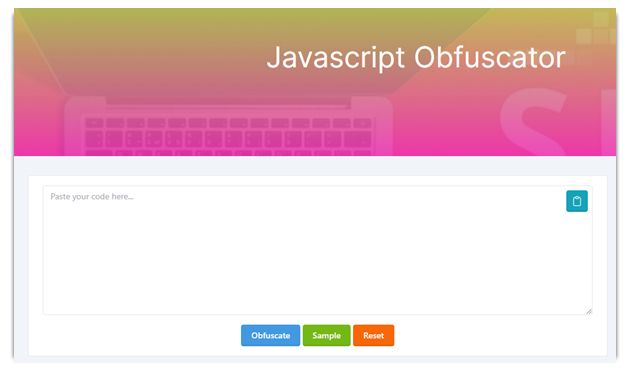
You will see an empty box for entering a JavaScript file.
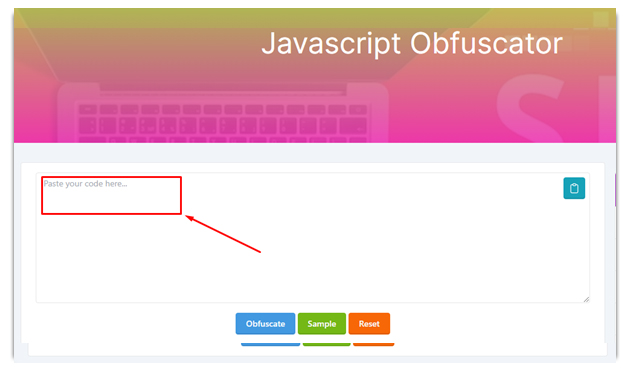
In the section below you will see three buttons for operating this tool. One is for obfuscation, one is for a sample project and the other is for resetting the process.
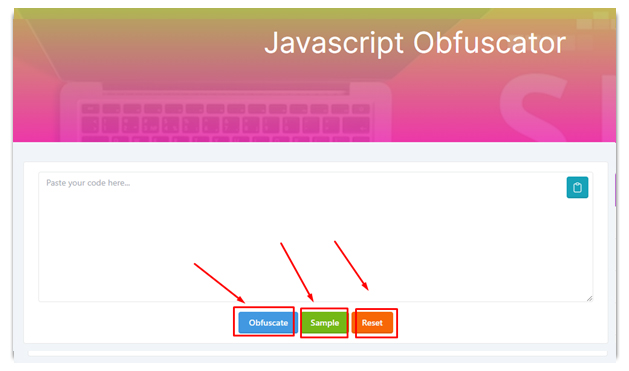
Now enter your file in the blank box and press the obfuscate button.
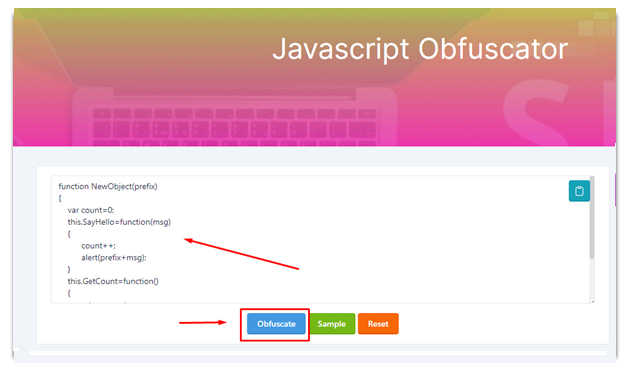
The result page will appear in the below section. You can copy the result with just one click.
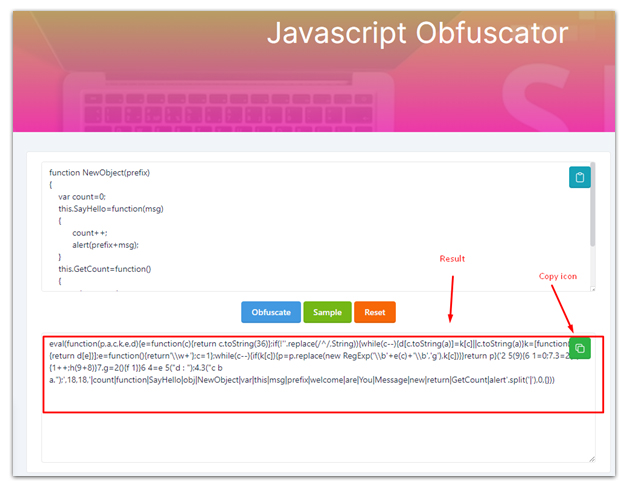
Now you have the result. Use it for your any project and enjoy. If you have any problems you can contact us for help.
Why Do You Use JavaScript Obfuscation?
Obfuscation helps protect the intellectual property embedded in JavaScript code. By making the code difficult to understand, developers can reduce the risk of unauthorized use or reproduction. While obfuscation is not a foolproof security measure, it adds an extra layer of complexity that can discourage casual attempts to analyze or manipulate the code. This can be particularly relevant when dealing with client-side logic in web applications.
Also in cases where developers distribute JavaScript code as part of a library or framework, obfuscation can be used to enforce licensing agreements. It makes it more challenging for users to modify the code without adhering to licensing terms.
Practical Usage of JavaScript Obfuscation
Companies with proprietary algorithms implemented in JavaScript can use obfuscation to shield their intellectual property and maintain a competitive edge. Web applications often include client-side logic that is visible to users. Obfuscation helps obscure this logic, making it harder for attackers to exploit vulnerabilities or manipulate the application behaviour.
Obfuscation makes it more challenging for attackers to perform code analysis, reducing the likelihood of discovering vulnerabilities or weaknesses in the code.
Our Tool JavaScript Obfuscators
JavaScript obfuscation can be achieved using various tools, both online and offline. But if you use our tool it will give you a hundred percent accurate result with just some clicks. Our tool is easy to use and has a very user-friendly interface. We allow developers to input their JavaScript code and receive an obfuscated version.
Conclusion
JavaScript obfuscation serves as a valuable technique for developers seeking to fortify their code against prying eyes and potential threats. While it may not provide absolute security, obfuscation adds a layer of complexity that can deter unauthorized access and protect intellectual property. Whether you're developing commercial software, open-source libraries, or web applications with sensitive client-side logic, leveraging JavaScript obfuscators contributes to a comprehensive security strategy in the dynamic realm of web development.











